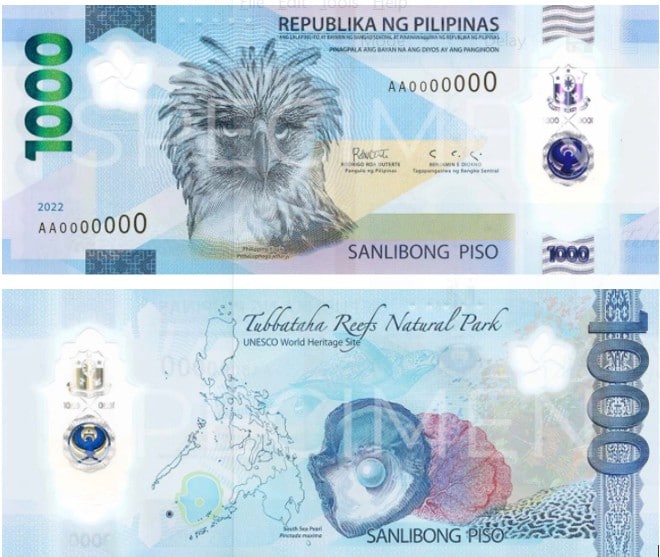
The anti-counterfeit properties of polymer banknotes, many governments are switching from paper money to them. Here’s some more information on the polymer banknotes.
How quickly things have changed! Paper money (made of 75 percent cotton and 25 percent linen blend) will most likely be phased out in favor of polymer banknotes over time. But, why is the polymer obsession spreading so quickly?
Is it more secure? Is it more appealing? Or does it have a higher worth than regular paper money?
Polymer banknotes have already gained a lot of traction in a number of places around the world. In Canada, for example, they are currently in circulation, while the UK government intends to phase out paper banknotes by 2020.
Of course, as with anything, there are benefits and drawbacks to adopting polymer banknotes. Filipinos need to understand what these polymers are and how useful they are in the Philippines’ monetary system.
The BSP will try to use these materials for the 1000 bill sooner or later.
POLYMER BANKNOTES: WHAT ARE THEY?
What is polymer, and how does it vary from the paper that is used to print money? Polymer is a transparent, thin material that is more durable than paper.
The Reserve Bank of Australia (RBA) was the first to develop polymer banknotes, working with the Commonwealth Scientific and Industrial Research Organization and the University of Melbourne. Because of the numerous advantages, many countries are now adopting these notes. Romania, Canada, Israel, and Vietnam are the only countries that have completely transitioned to polymer banknotes.
POLYMER BANKNOTES CONS
There are some drawbacks to utilizing polymer banknotes, as there are too many things. There’s a danger that older sorting machines won’t be able to sort out these newer notes as quickly as they could with paper money.
To accommodate polymer banknotes, these sorting devices will most likely need to be upgraded or updated.
Colors on polymer banknotes can fade over time. Nigeria, for example, returned to paper money after the polymer banknote test failed when the money began to fade and vendors began rejecting it.
Folding polymer banknotes can be tricky. It will have a crease along the fold line if you force-fold it. When moist, polymer banknotes can become sticky. This can be aggravating, particularly when going through the notes.
POLYMER BANKNOTES PROS
Bills made of polymer last a long period. The normal wear and tear that occurs with paper money does not harm polymer notes as quickly as it does with paper money.
Polymer banknotes are expected to endure 2.5 times longer than paper money, according to The Guardian in 2013.
Due to the detailed graphics and the fact that the bills are created with expensive technology meant to reduce the risk of counterfeiting, polymer banknotes are more difficult to counterfeit than paper banknotes. In comparison to countries that still use paper money, countries that have embraced polymer banknotes have already claimed a significant drop in counterfeiting.
Paper money, unlike polymer money, is readily soiled. Paper money has been found to include residues of feces, filth, viruses, bacteria, and more when thoroughly tested.
Did you know that flu agents can live on paper money for up to ten days? Polymer banknotes are substantially cleaner than paper bills and are less prone to harbor a variety of bacteria and viruses.
This is because polymer banknotes are essentially plastic, which means that if the bill becomes dirty or has liquid spilled on it, cleaning it is far easier than cleaning a paper banknote.
Extreme temperatures are not a problem for polymer notes. Polymer banknotes, according to the Bank of Canada’s director of currency, can endure temperatures of up to 140 degrees
Celsius. Polymer bills may also resist subzero temperatures without being harmed.
Another fantastic feature of the polymer banknote is that it can be recycled when it wears out, reducing resource depletion while also reducing environmental harm.
While there are advantages and disadvantages to adopting polymer banknotes, the advantages greatly exceed the disadvantages since polymer banknotes are more durable, secure, and hygienic. While there will always be those who prefer paper money, as technology advances, countries will be more likely to adopt polymer banknotes into circulation.
CONCLUSION: SEVERAL REASONS FOR CHANGING TO A POLYMER BASED SYSTEM
The Bangko Sentral ng Pilipinas (BSP) also downplayed the impact of the move on the local abaca industry, which has been supplying raw material for the production of peso banknotes since 2001, claiming that it has been coordinating with other government agencies to help mitigate the impact on the affected workers, who are estimated to number between 210 and 481.
“The BSP is currently preparing for a limited circulation test of a polymer version of the 1000-piso note (to circulate in parallel with current notes) to determine whether the benefits claimed by other central banks hold true under Philippine conditions,” according to a statement from the BSP.
The test will assist us in determining the consequences of polymerization on hygiene and public health, environmental sustainability, as well as the lifetime, durability, and counterfeiting rates of our cashback money,” according to the government. “It will also enable us to get stakeholder feedback and track changes in cash handling behavior,” says the researcher.
The BSP’s proposed switch to plastic-based raw materials will be the agency’s second attempt to develop more durable banknotes in response to the rapid deterioration of abaca-based peso bills, particularly smaller denominations such as the P20 bill, which is frequently used in damp markets.
The last attempt, however, was scrapped after customers complained that the plastic-reinforced banknotes, which were identical to those used in Europe or Singapore, felt “inauthentic.”
The BSP stated that it is still looking for methods to improve Philippine banknotes, and that “pressing public concerns” have heightened the urgency of the BSP’s present work in this area.
“Sanitizing regularly handled things, such as banknotes and coins, has become a widespread necessity among members of the public since the commencement of the COVID-19 pandemic,” it added.
Second, while the Philippines does not have a significant counterfeiting problem, criminal gangs continue to improve their counterfeiting skills for the New Generation Currency bills in circulation, according to the BSP.
“Third, given the increasing scarcity of water, energy, and other inputs,” the agency noted, “the creation of our banknotes may be made more sustainable.”
“These concerns encouraged the BSP to examine upgrading the material and performance of current banknotes.” The BSP, as the country’s sole currency issuer, must ensure that our currency is safeguarded and that the requirements of the Filipino people are met.”




